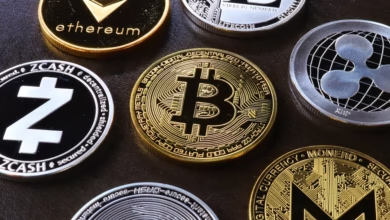The Role of Central Banks’ Gold Reserves in Global Finance: Understanding Trends, Safe Haven Assets, and Investment Strategies

In the intricate landscape of global finance, gold reserves held by central banks play a pivotal role in shaping economic stability and investor confidence. As a time-honored safe haven asset, gold has maintained its significance throughout economic fluctuations, and recent trends indicate a renewed interest in gold investment as a hedge against inflation and currency devaluation. This article delves into the multifaceted world of central banks' gold holdings, exploring the significance and evolving trends in global finance. We will discuss why gold remains a cornerstone for financial security during uncertain times, and analyze the dynamics of the gold market, including investment strategies and the future outlook for gold prices. From the impact of gold mining and recycling to the emergence of gold ETFs and futures, we will cover various aspects that affect gold's value and its role in the global economy. Join us as we navigate the complexities of gold reserves, shedding light on their importance in today's financial environment and their potential to influence the future of global gold demand.
- 1. Understanding Central Banks' Gold Reserves: Significance and Trends in Global Finance
- 2. The Role of Gold as a Safe Haven Asset Amid Economic Uncertainty
- 3. Analyzing Gold Market Dynamics: Investment Strategies and Future Outlook for Gold Prices
1. Understanding Central Banks' Gold Reserves: Significance and Trends in Global Finance
Central banks play a pivotal role in the global finance landscape, particularly through their gold reserves. Understanding the significance of these reserves is crucial for grasping their impact on the gold market trends and overall economic stability. Central banks typically hold gold as a safe haven asset, providing a buffer against inflation and currency fluctuations. As global economic uncertainties rise, many central banks have increased their gold holdings, reflecting a growing trend towards gold investment.
In recent years, gold prices have experienced considerable volatility, influenced by various factors including geopolitical tensions and shifts in monetary policy. This fluctuation has prompted central banks to strategically adjust their gold reserves. The current trend indicates a shift towards accumulating physical gold, as it is seen not only as a hedge against inflation but also as a reliable store of value amid the growing global gold demand.
Moreover, the rise of gold ETFs and gold futures has made it easier for investors to access the gold market without needing to physically hold the asset. This accessibility has further solidified gold’s position in the financial landscape, allowing for more efficient trading and investment strategies. However, challenges remain, such as gold smuggling and the regulatory issues surrounding the gold trade, which can impact market dynamics.
Another essential aspect of central banks' gold strategies is the focus on sustainable gold mining practices. As global awareness of environmental issues increases, there is a push for responsible sourcing and refining of gold. This trend not only addresses environmental concerns but also meets the growing consumer demand for luxury gold products that are ethically produced.
In conclusion, central banks' gold reserves are a critical component of global finance, reflecting broader economic trends and investor sentiment. As we navigate an increasingly complex financial world, understanding the role of gold—whether through gold coins investing, gold bullion, or gold recycling—will remain essential for anyone looking to comprehend the dynamics of the gold market and its future trajectory.
2. The Role of Gold as a Safe Haven Asset Amid Economic Uncertainty
In times of economic uncertainty, gold has consistently proven to be a reliable safe haven asset. This reputation is largely due to its intrinsic value, which remains resilient amid volatile market conditions. Investors often turn to gold investment as a means to preserve wealth, especially when faced with inflation or currency fluctuations. Central banks globally recognize this value, holding substantial gold reserves as part of their monetary policy strategy.
The gold market trends indicate that during periods of economic distress, such as financial crises or geopolitical tensions, gold prices tend to rise as demand surges. Investors flock to gold bullion, gold bars, and gold coins, leading to increased trading in gold ETFs and gold futures. These instruments offer a way to invest in gold without the need to physically hold the metal, although many still prefer the security of physical gold, such as gold jewelry or collectible coins.
Sustainable gold mining practices are also gaining traction, as consumers become more conscious of the ethical implications of their investments. This includes the importance of gold recycling, which helps meet the growing global gold demand without the environmental impacts associated with traditional mining. Moreover, the gold trade is closely monitored, with concerns over gold smuggling and illegal mining practices highlighting the need for transparency in the gold market.
As gold continues to serve as a hedge against economic uncertainty, its relationship with alternative investments, like cryptocurrency, is also evolving. Investors are increasingly considering the role of gold as a stable asset in a diversified portfolio, especially when compared to the volatility of digital currencies.
Overall, the enduring appeal of gold as a safe haven asset underscores its significance in the global financial landscape. Central banks' gold holdings not only reflect economic stability but also reinforce gold's position as a critical component of financial security in uncertain times.
3. Analyzing Gold Market Dynamics: Investment Strategies and Future Outlook for Gold Prices
The dynamics of the gold market are influenced by a multitude of factors, making it essential for investors to adopt effective strategies when considering gold as part of their portfolio. As central banks continue to hold substantial gold reserves, their actions can significantly impact gold prices and market trends. In recent years, gold has emerged as a safe haven asset, particularly during periods of economic uncertainty and inflation.
Investors often explore various avenues for gold investment, including physical gold in the form of gold bars, coins, and jewelry, as well as financial instruments such as gold ETFs and gold futures. Each of these options comes with its unique advantages and risks, necessitating careful consideration. For instance, while gold ETFs provide easier access and liquidity, physical gold offers tangible security in times of volatile markets.
The future outlook for gold prices remains optimistic, bolstered by global gold demand and the increasing appetite for sustainable gold mining practices. As more consumers seek ethically sourced gold, the emphasis on gold recycling and responsible mining will likely shape market dynamics. Additionally, the ongoing discussions around the gold standard and its relationship with emerging assets like cryptocurrency could redefine gold's role in the financial ecosystem.
Furthermore, gold market analysis reveals that geopolitical tensions and economic policies will continue to influence investor sentiment. With gold production and refining processes evolving, the market is poised to adapt to changing demands. Collectibles, such as luxury gold items and rare gold coins, also contribute to the investment landscape, offering both aesthetic and financial value.
In summary, understanding gold market trends and the interplay between gold and inflation is crucial for investors looking to navigate the complexities of gold investing. By staying informed about central banks' gold strategies and the broader economic landscape, investors can make educated decisions to optimize their gold holdings in a continually shifting market.
In conclusion, central banks' gold reserves play a pivotal role in shaping the landscape of global finance. As we've explored, the significance of these reserves extends beyond mere statistics; they serve as a cornerstone for stability in times of economic uncertainty. The enduring appeal of gold as a safe haven asset is evident, particularly amid fluctuating gold prices and shifting market dynamics.
Investment strategies surrounding gold, whether through gold ETFs, futures, or physical gold holdings, remain critical considerations for investors looking to navigate the complexities of the gold market. The future outlook for gold prices will likely continue to be influenced by global gold demand, inflationary pressures, and technological advancements in gold mining and refining.
Furthermore, the ethical dimensions of gold production, including sustainable gold mining and the impact of gold smuggling on the market, are increasingly gaining attention. As we move forward, understanding these factors will be essential for making informed decisions in gold investment and capitalizing on opportunities within this precious metal's market.
Ultimately, whether through gold coins, bullion, or collectibles, the allure of gold continues to captivate investors and central banks alike, reaffirming its status as a timeless asset in the ever-evolving financial landscape. As gold intertwines with modern financial instruments such as cryptocurrency, the future of gold in global finance promises to be both intriguing and transformative.
References:
– [Author, Year, Title, Source]
– [Author, Year, Title, Source]
– [Author, Year, Title, Source]





